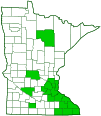lily-leaved twayblade
(Liparis liliifolia)
Conservation • Wetland • Description • Habitat • Ecology • Use • Distribution • Taxonomy
Description |
||
Lily-leaved twayblade is a 3½″ to 10½″ tall, erect, perennial forb that rises on two basal leaves and a single stem from a bulb-like storage organ (corm) and fibrous roots. It occurs in eastern United States from Maine to Minnesota, south to North Carolina and Arkansas, and in southern Ontario. In Minnesota it occurs from the driftless area in the southeast to just north of the St. Cloud area, with isolated populations in Itasca and Watonwan Counties. The corm, called a pseudobulb, is white, egg-shaped, ¾″ long, and ⅜″ wide. It is just below the soil surface and is partially wrapped (sheathed) by the bases of the leaves and by other small modified leaves (bracts). Each year, at the leaf node near the base of the stem, a new pseudobulb is produced from which the next year’s leaves and stem will rise. The previous year’s pseudobulb is usually also present, connected by a short underground stem (rhizome). The basal leaves are slightly succulent, glossy, egg-shaped to elliptic, 1½″ to 7″ long, and ¾″ to 3¾″ wide. They are 1½ to 3 times longer than wide, usually more than 1½″ wide. They are broadly or narrowly pointed at the tip and sheath the pseudobulb at the base. The upper and lower surfaces are hairless. The margins are untoothed. The stem is stout, somewhat angled, leafless, hairless, bright green, and sometimes tinged purplish brown. The inflorescence is a 1½″ to 6″ long, loose, unbranched arrangement (raceme) of 5 to 31 flowers at the end of the stem. Each flower is on a slender, hairless, reddish-purple stalk (pedicel) that is 5 ⁄16″ to 9 ⁄16″ (8 to 14 mm) long including the ovary at the base of the flower. At the base of each pedicel there is a tiny, triangular, 1 ⁄16″ (2 mm) long, 1 ⁄32″ (1 mm) wide bract. Each flower is about ¾″ to 1″ wide. There are 3 sepals, 3 petals, 1 stamen, and 1 reproductive column. The sepals are yellowish-green, narrowly lance-shaped to linear, 5 ⁄16″ to 7 ⁄16″ long, and 1 ⁄32″ (1.2 mm) to 1 ⁄16″ (2 mm) wide. During development the flower twists 180° (resupinate) so that, when mature, the upper petal (lip) appears to be the lower. The lateral petals are brownish-purple, narrowly linear to thread-like, 5 ⁄16″ to ½″ (8 to 12 mm) long, and no more than 1 ⁄64″ (0.2 to 0.3 mm) wide. They are curved and hang downward. The lip is egg-shaped, more or less flat, abruptly pointed at the tip (apiculate), 5 ⁄16″ to ½″ (8 to 12 mm) long, and ⅜″ to ¾″ wide. It is pale brownish-purple with darker purple veins. The column consists of the style fused to the filament of the single stamen. It is ⅛″ (3 to 4 mm) long, 1 ⁄32″ to 1 ⁄16″ (1.0 to 1.5 mm) wide, and is winged near the top. The anther is yellow. The fruit is a slightly winged, ellipse-shaped, ⅝″ (15 mm) long, 3 ⁄16″ (5 mm) wide capsule at the end of a 7 ⁄16″ to 11 ⁄16″ (11 to 18 mm) long pedicel. Each capsule contains numerous seeds. After the flowers drop off in late summer the cluster of erect, green, seed capsules at the end of a bare green stem rising from persistent green basal leaves is distinctive. |
||
Height |
||
3½″ to 10½″ |
||
Flower Color |
||
Brownish-purple |
||
Similar Species |
||
Fen orchid (Liparis loeselii) basal leaves are narrow, 3 to 6 times longer than wide. They no more than 2″ wide and are usually less than 1½″ wide. The lip is green or yellowish green and is much smaller, no more than 3 ⁄16″ (5.5 mm) long. The pedicel of the fruiting capsule is much shorter, no more than ¼″ (7 mm) long. It is found in wetlands, not uplands. |
||
Habitat |
||
Moderately moist to moderately dry. Open, upland hardwood woodlands; small woodland openings; and woodland trails. Partial sun to light shade. |
||
Ecology |
||
Flowering |
||
Early June to early July |
||
Pests and Diseases |
||
|
||
Use |
||
|
||
Distribution |
||||
|
Sources |
|||
| 5/6/2023 | ||||
Nativity |
||||
Native |
||||
Occurrence |
||||
Widespread and common in the east, scattered to rare in Minnesota. Lily-leaved twayblade is declining in Minnesota due to loss of habitat and to forest management practices. It grows in upland oak forests with partial sun or light shade. It may be decreasing in part due to fire suppression and forest succession, as oak forest is overtaken by maple and basswood and becomes more densely shaded. |
||||
Taxonomy |
|||
| Kingdom | Plantae (Plants) | ||
| Subkingdom | Pteridobiotina | ||
| Phylum | Tracheophyta (Vascular Plants) | ||
| Class | Liliopsida (Monocots) | ||
Order |
Asparagales (Agaves, Orchids, Irises, and Allies) | ||
Family |
Orchidaceae (orchids) | ||
| Subfamily | Epidendroideae | ||
| Tribe | Malaxideae | ||
| Subtribe | Malaxidinae | ||
Genus |
Liparis (widelip orchids) | ||
Synonyms |
|||
|
|||
Common Names |
|||
brown widelip orchid large twayblade lily-leaved twayblade mauve sleekwort purple twayblade |
|||
Glossary
Apiculate
Ending in a short, abrupt, flexible point.
Bract
Modified leaf at the base of a flower stalk, flower cluster, or inflorescence.
Column
The united filaments and style of an orchid. The structure formed by the united filaments of plants in the Mallow family.
Corm
A short, solid, vertical, thickened, underground stem that serves as a storage organ.
Linear
Long, straight, and narrow, with more or less parallel sides, like a blade of grass.
Node
The small swelling of the stem from which one or more leaves, branches, or buds originate.
Pedicel
On plants: the stalk of a single flower in a cluster of flowers. On insects: the second segment of the antennae. On Hymenoptera and Araneae: the narrow stalk connecting the thorax to the abdomen: the preferred term is petiole.
Resupinate
In fungi: referring to the fruiting body lying flat on the surface of the substrate, without a stalk or a cap. In orchids: referring to flowers twisted 180° at the base during development so that when mature the upper petal appears to be the lower.
Rhizome
A horizontal, usually underground stem. It serves as a reproductive structure, producing roots below and shoots above at the nodes.
Succulent
Having thick leaves, stems, or roots that store water. Succulent tissues appear fleshy externally and juicy internally.
Wing
A thin, flat, membranous, usually transparent appendage on the margin of a structure.
Visitor Photos |
|||||
Share your photo of this plant. |
|||||
| This button not working for you? Simply email us at info@MinnesotaSeasons.com. Attach one or more photos and, if you like, a caption. |
|||||
RC |
|||||
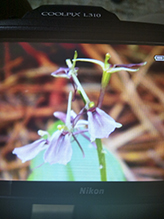 |
|||||
MinnesotaSeasons.com Photos |
|||||
Plant |
|||||
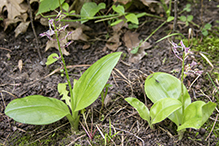 |
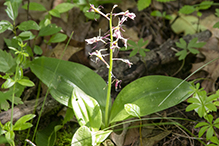 |
||||
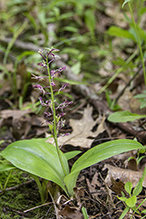 |
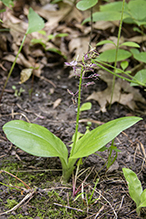 |
||||
Inflorescence |
|||||
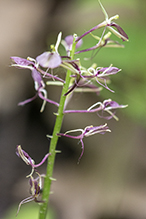 |
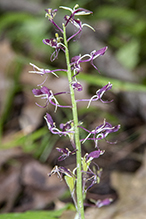 |
||||
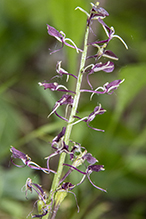 |
|||||
Flower |
|||||
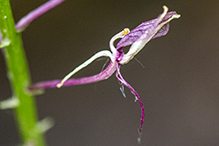 |
 |
||||
Leaves |
|||||
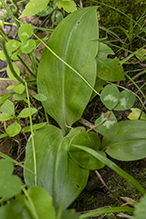 |
|||||
Fruiting plant |
|||||
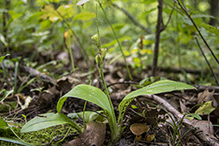 |
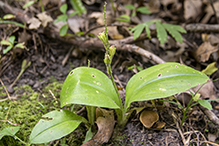 |
||||
Fruit |
|||||
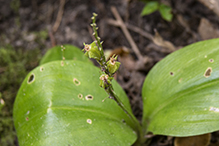 |
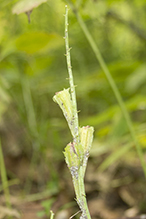 |
||||

Slideshows |
||

Visitor Videos |
|||
Share your video of this plant. |
|||
| This button not working for you? Simply email us at info@MinnesotaSeasons.com. Attach a video, a YouTube link, or a cloud storage link. |
|||
Other Videos |
|||

Created: 10/5/2019
Last Updated:
